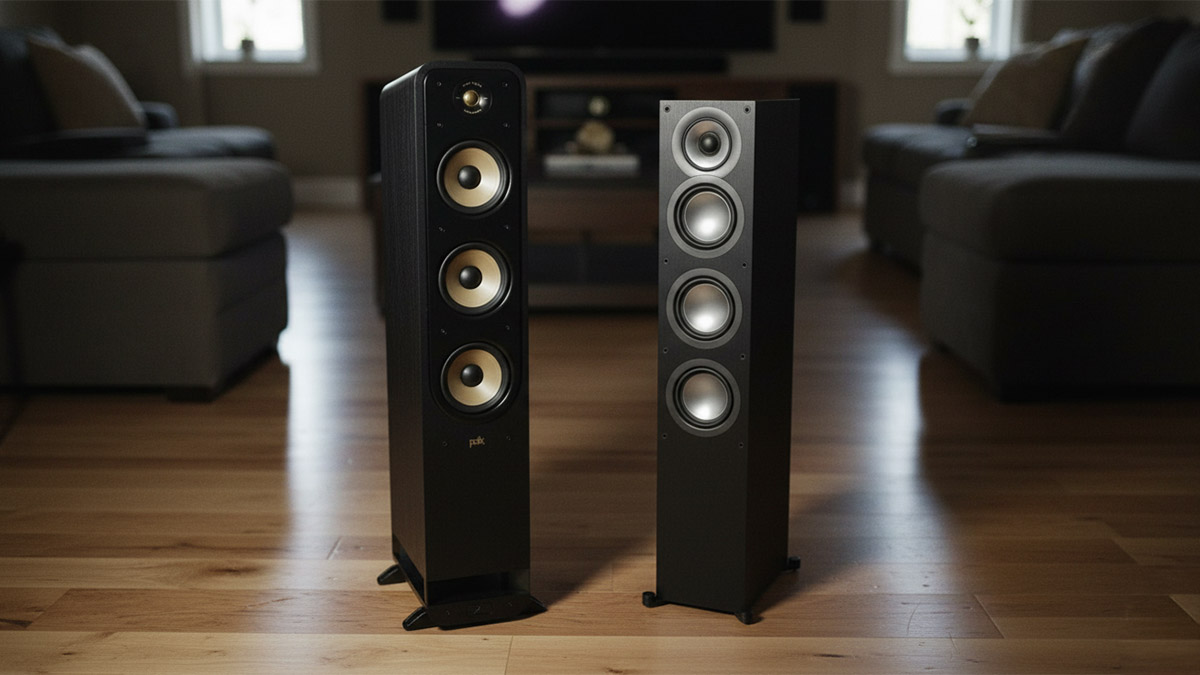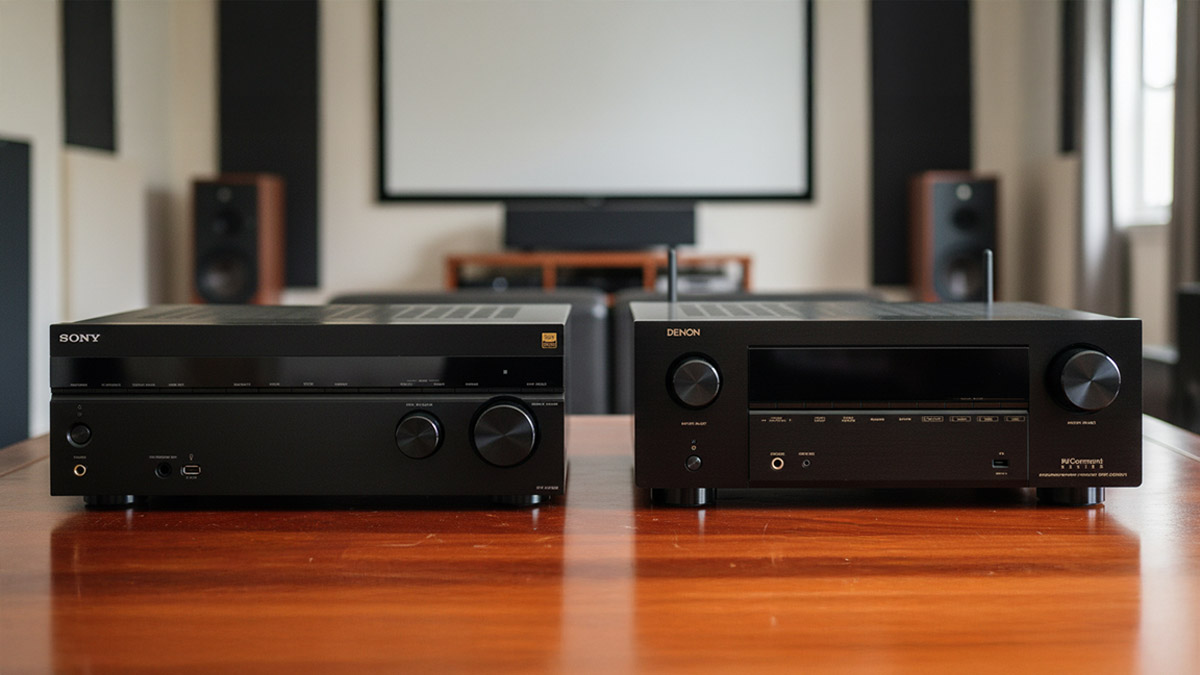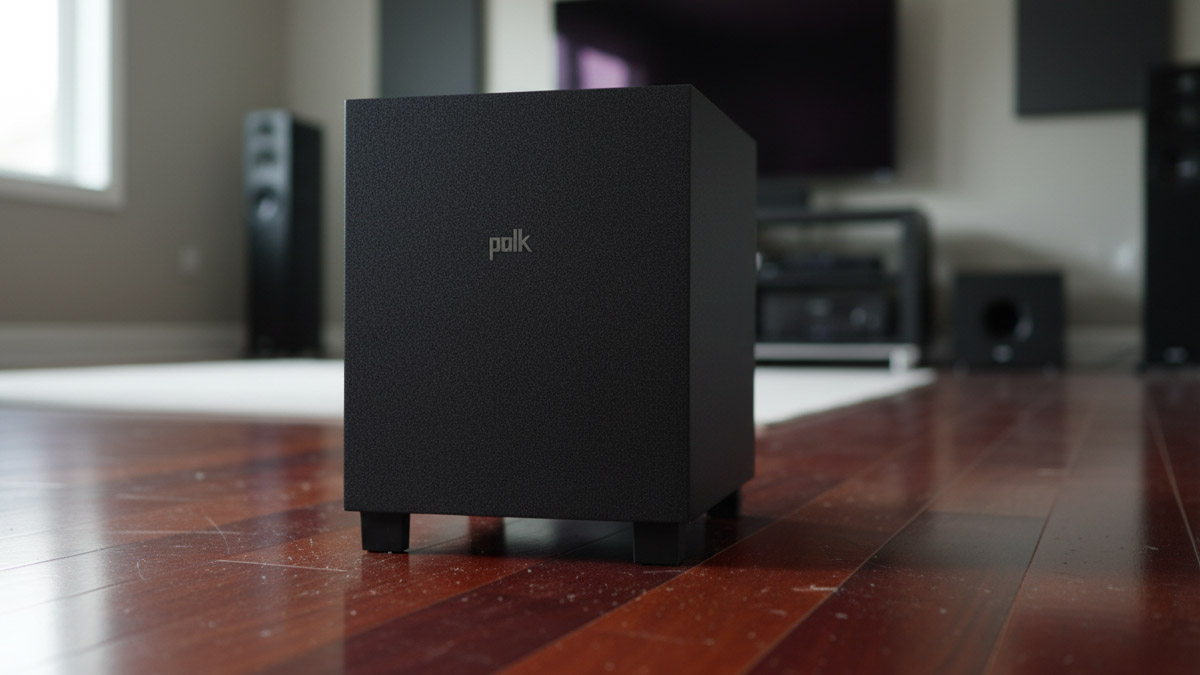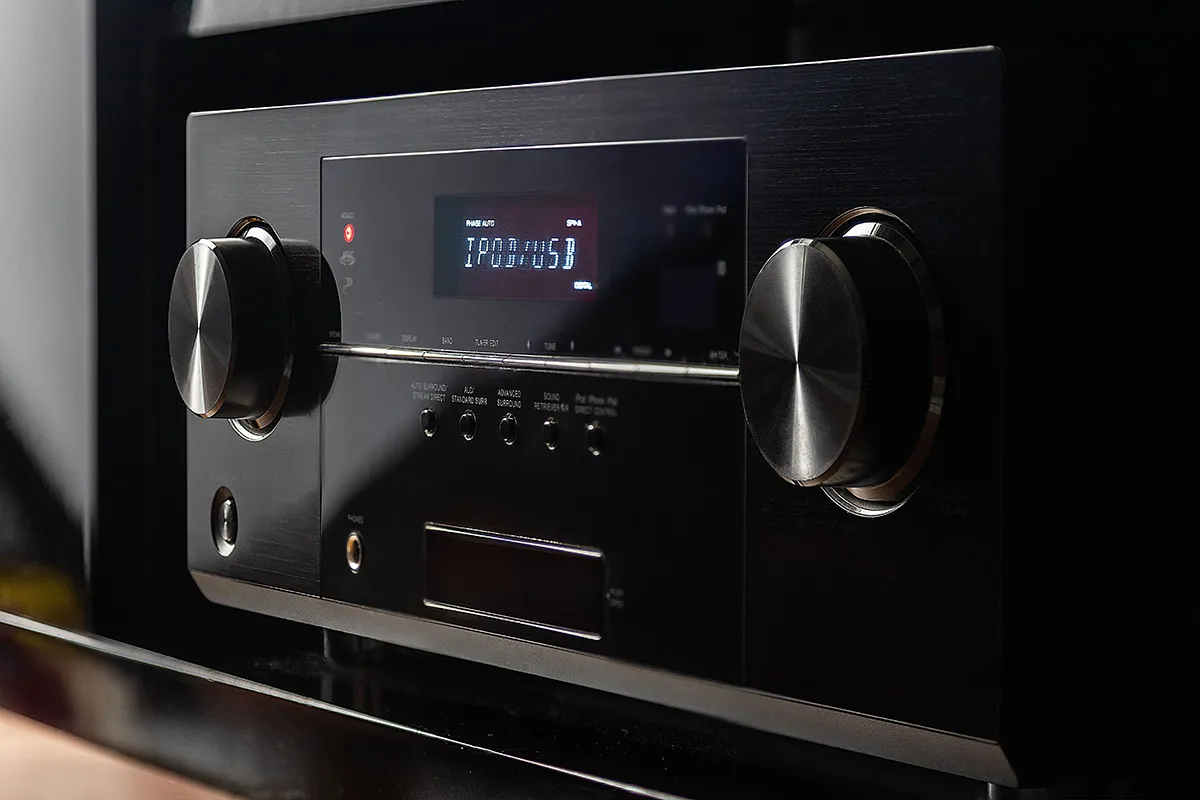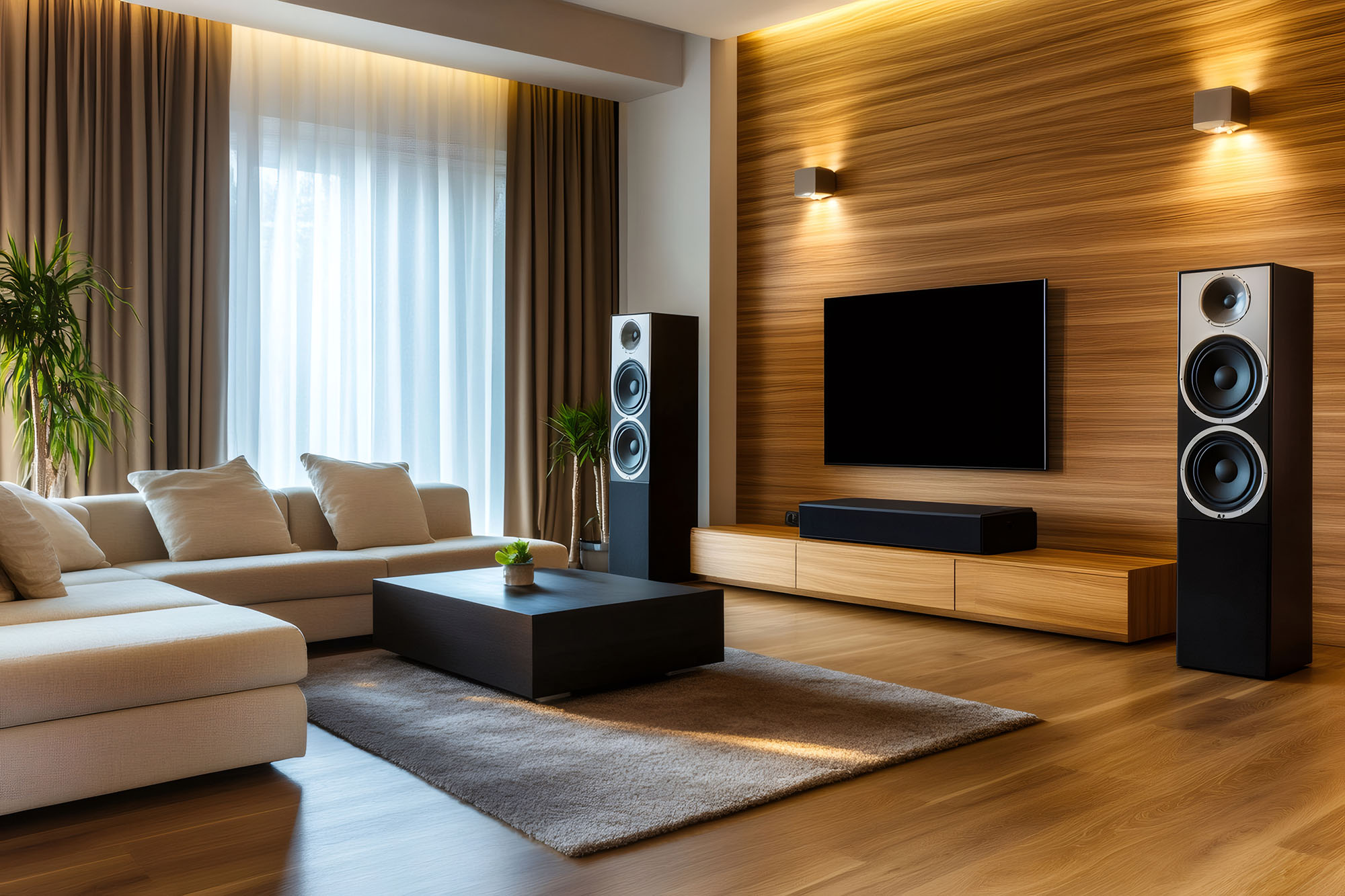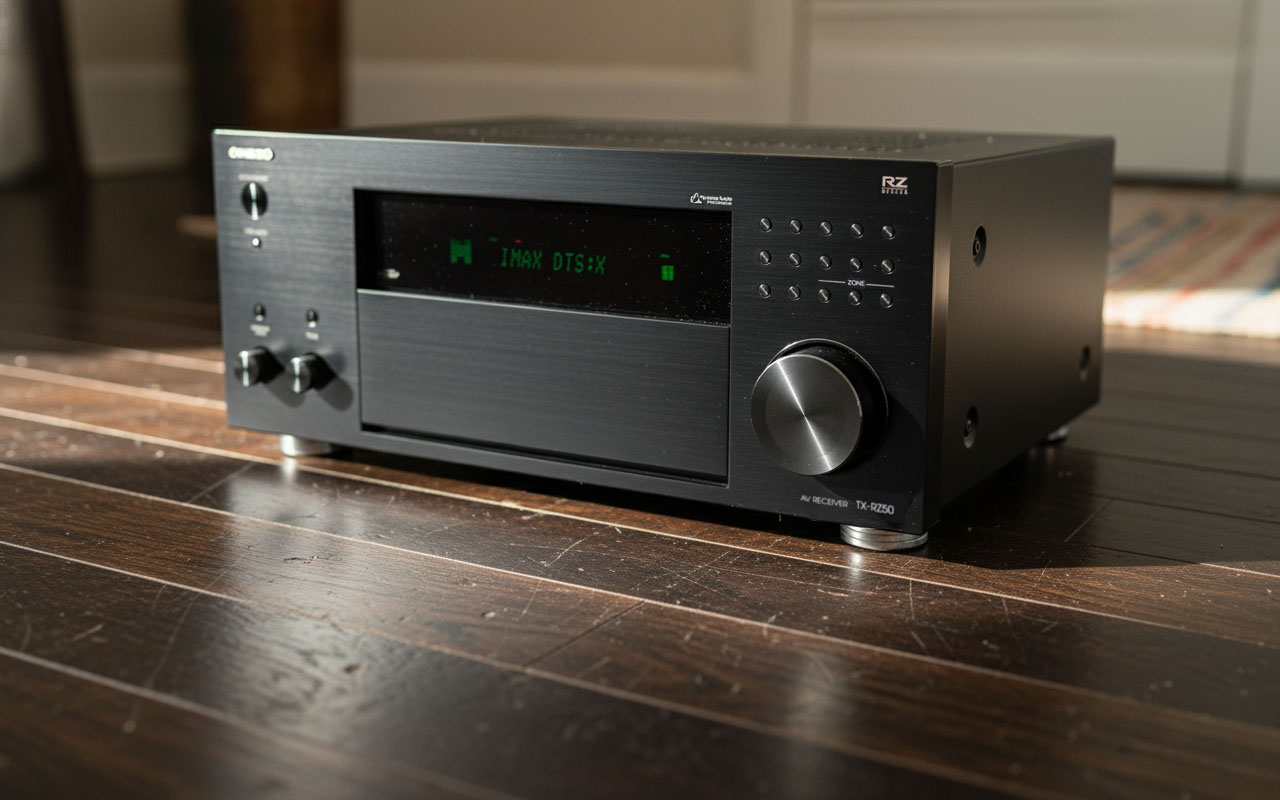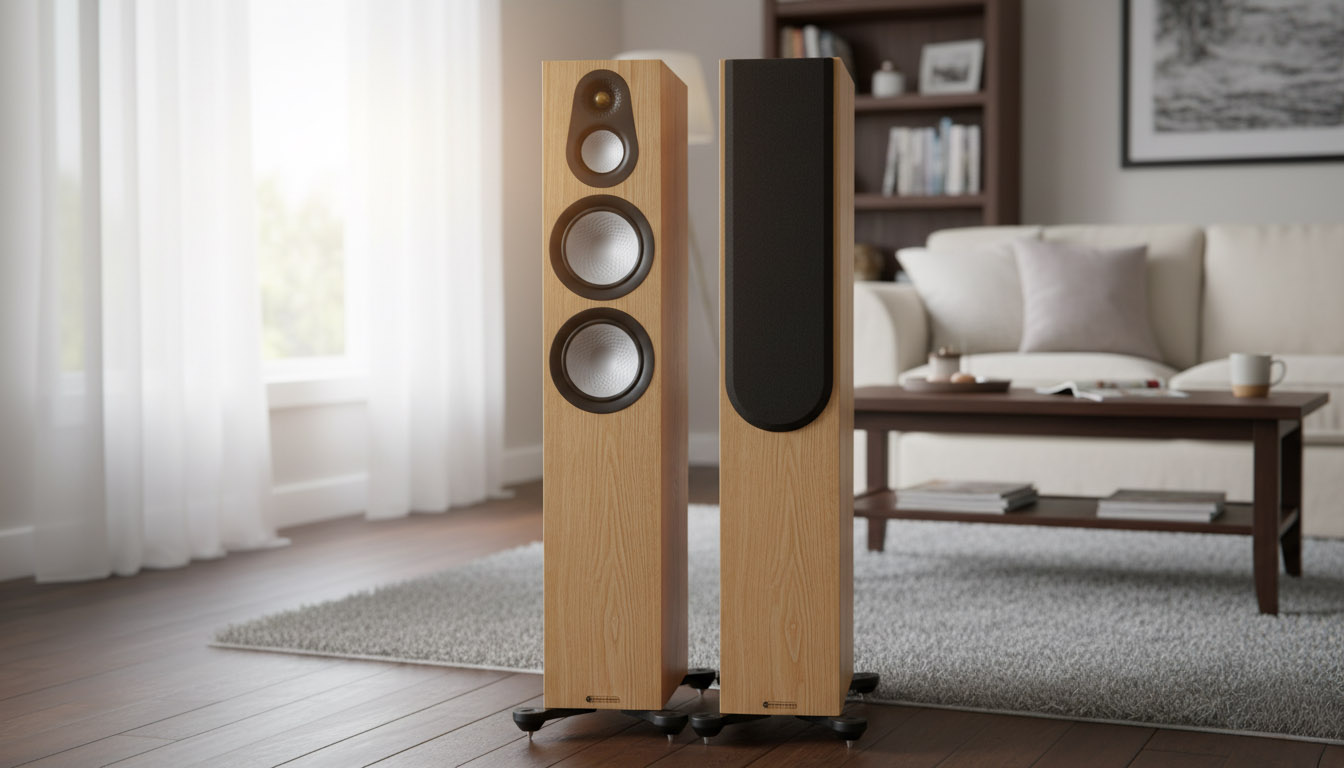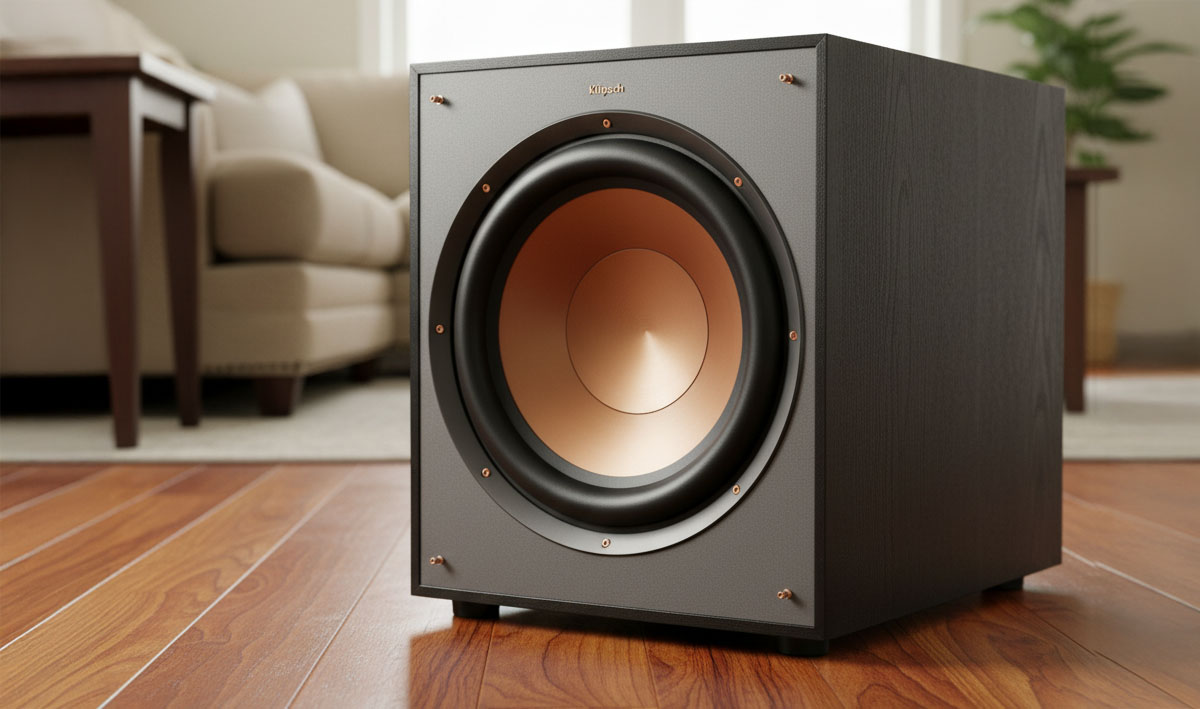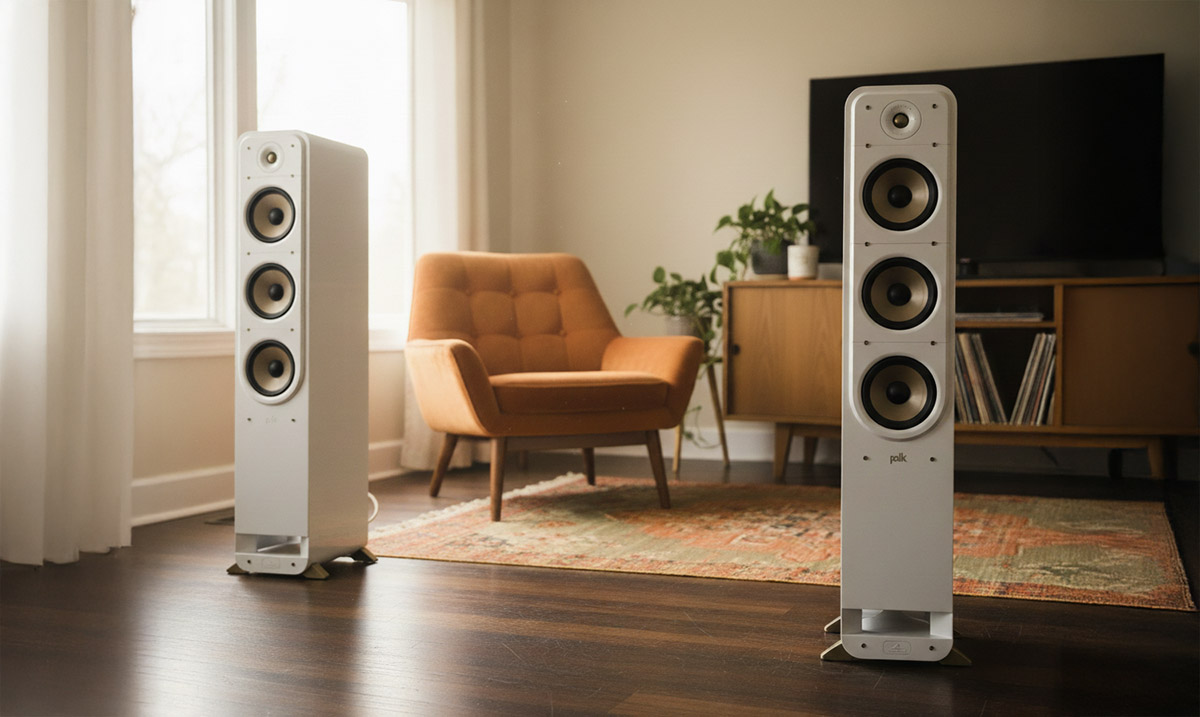You’re weighing two strong but different approaches to big sound. ELAC’s UF52 leans on a concentric mid and tweeter for point source coherence and image precision. Polk’s ES60 uses generous cone area and a broad, friendly spread to fill space with ease. Both can anchor music and movie nights. The better choice depends on how sensitivity and directivity play with your room, your seating distance, and your amplifier.
What they are
The ELAC Uni Fi 2.0 UF52
is a true three way tower built around a concentric driver. The tweeter sits at the center of the midrange cone, so mids and highs launch from nearly the same point. That geometry helps timing and imaging. Three dedicated 5.25 inch woofers handle bass, the cabinet is well braced, and the voicing aims for control rather than flash. Sensitivity is on the lower side at 85 dB, with a 6 ohm nominal load.
Polk Signature Elite ES60
is also a three way tower but with a conventional layout. A 1 inch soft dome tweeter handles the top, a dedicated midrange sits below, and three 6.5 inch woofers bring the low end. Porting is designed to move air smoothly, so you get solid bass without obvious chuff. Sensitivity is higher at about 90 dB, and the speaker is designed to play nicely with common 4 or 8 ohm amplifier outputs.
How they tend to sound to real listeners
The UF52 reads clean and precise. Voices lock at the center, cymbals stay crisp without splash, and instrumental tone feels believable. You notice image focus first, then the way bass lines carry pitch instead of boom. Give them a capable amp and they scale with the music, staying composed when the mix gets dense.
The Polk Signature ES60 feels generous and confident. Kick drums land with body, movie effects arrive with weight, and the stage spreads wide even when you can’t pull the towers far from the wall. Treble is lively but polite when you aim them sensibly. The midrange adds a touch of warmth. Many listeners enjoy the sense of ease at everyday volumes.
RELATED: Klipsch RP-8000F II Review
Sensitivity and directivity
Sensitivity tells you how much output a speaker produces for a given watt. It shapes how effortless the system feels, how much headroom you have on peaks, and how audible the amp’s noise floor is at your favorite volume. Directivity describes where the energy goes once it leaves the cabinet. It affects clarity, tonal consistency across seats, and how much of the room joins the party.
Let’s put those traits into actual spaces so the differences become obvious.
Small reflective living room
Think hard floors, big windows, sparse rugs. Early reflections hit your ears almost as fast as the direct sound.
- Sensitivity at work: A responsive speaker keeps life in the music at low to moderate volume, since the amp is coasting. Polk’s higher sensitivity helps late night listening feel present without cranking the dial. ELAC still sounds great, but it appreciates an amp with clean current so transients don’t flatten when you raise the level.
- Directivity at work: Too much side wall splash can sharpen treble. ELAC’s concentric behaves like a tidy point source, so you can toe the towers until the tweeter axes cross just behind your head and keep consonants crisp without edge. Polk’s broader spread fills the room easily. Add a small rug at first reflection points and match the distance to each side wall within a half inch to keep tone even.
Quick setup that works: Start both pairs about 18 inches from the wall. Aim the ELACs slightly past your shoulders. Aim the Polks so the tweeters point just outside your shoulders. Play a spoken voice and slide both speakers forward or back in 1 inch moves until chestiness drops.
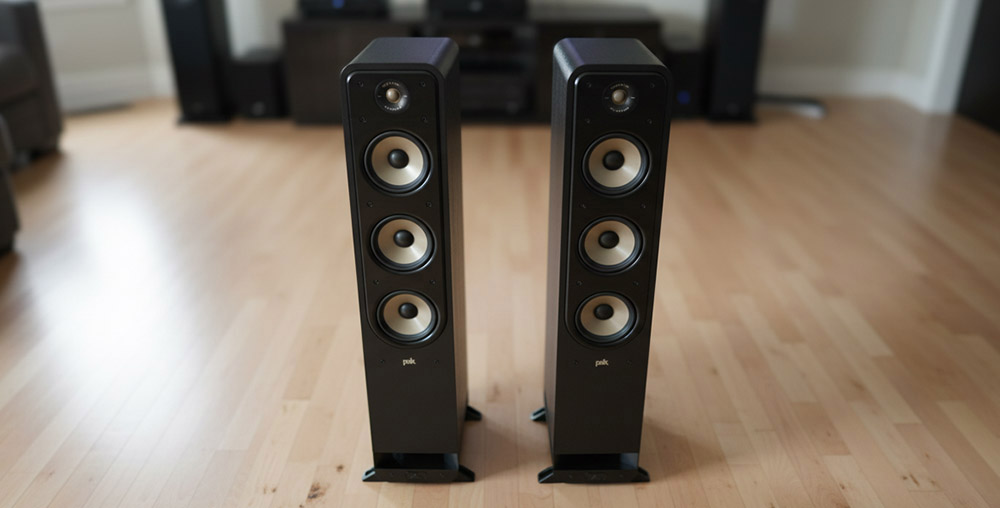
Medium room with normal furnishings
Couch, rug, curtains, bookcases. Reflection and absorption are balanced.
- Sensitivity in play: Any honest 60 to 100 watt amplifier runs either tower well at normal distances. If you often listen quietly, the Polk UF52’s higher sensitivity keeps microdetail awake at those levels. ELAC remains composed, and a gentle loudness contour can restore the bass and treble that ears lose at night.
- Directivity in play: Polk’s wide radiation builds a stable stage across a 3 seat couch. ELAC’s point source behavior paints sharper images at the sweet spot. If you sit centered and love vocal clarity, the ELAC UF52 leans your way. If multiple seats matter, Polk keeps tone more consistent as you slide left and right.
Quick setup that works: Give Polk 18 to 24 inches so the ports breathe. Keep ELAC 16 to 20 inches out, then fine tune toe in by a few degrees for the sharpest center voice.

Open plan great room
High ceilings and long sight lines. Distance eats loudness and deep bass.
- Sensitivity in play: Bigger spaces demand more clean power. Polk’s higher efficiency gets you to enjoyable levels sooner. ELAC can fill the space, though it benefits more from an amplifier with real grip so peaks stay clean.
- Directivity in play: Dispersion matters less than displacement and current in very large rooms. Polk’s greater cone area and room friendly voicing help carry the space. ELAC will sound excellent if you add a well placed sub to handle the last octave across multiple seats.
Quick setup that works: Keep both pairs at least 20 inches from the wall. If bass feels thin, close the gap by 2 inches at a time. Use a sub crossed low to add foundation without stealing midbass punch from the towers.
Long narrow room
Side reflections arrive early and strong.
- Sensitivity in play: Not the main lever here, both will get loud enough with competent power.
- Directivity in play: Control is king. ELAC’s concentric reduces side wall splash and makes placement easier. Polk still works well if you soften the first reflections and keep the left and right distances to side walls matched within a half inch.
Quick setup that works: Cross ELAC axes just behind your head. Aim the Polks slightly wider. Walk both pairs forward and back together in 1 inch steps while listening for a solid, chest free voice.
Nearfield or short seating distance
You sit 6 to 8 feet away.
- Sensitivity in play: Peaks still need clean watts, but average levels are modest. Any solid integrated or mid tier receiver will do fine.
- Directivity in play: Driver integration matters. The ELAC Uni-Fi UF52 behaves like a true point source through much of the mid and treble, which keeps tone intact as you move your head. Polk’s wide spread still images well up close, though you may want a hair less toe in to keep the center from feeling too strong.
Quick setup that works: Form an equilateral triangle with your head and the tweeters. A 1 degree change in toe in can flip the center from soft to razor sharp, so make small moves.
Treated media room
You already have panels and bass traps. Reflections are tamed.
- Sensitivity in play: You gain dynamic range because the room stops throwing energy back at you. Both speakers sound more direct and immediate.
- Directivity in play: With reflections under control, differences become flavor. ELAC gives you laser center focus and image depth. Polk paints a big, stable canvas with effortless scale. You can toe Polk a touch more aggressively without brightening the top end.
Quick setup that works: Seat height matters. Keep your ears close to tweeter height on both models. Then toe for balance between center lock and stage width.
Extra insight you won’t find on a spec sheet
Impedance behavior and amp noise floor
Sensitivity is only half the story. How impedance and phase swing with frequency decides how hard your amp really works. A tower that dips in the midbass can sound soft if your receiver’s power supply is light. Try this quick check. Play a steady bass note and raise volume in small steps. If bass thickens but doesn’t get louder, the amp is sagging. A beefier amp or a slightly higher crossover fixes it. Also listen for hiss at your seat with the volume set for normal viewing and no music playing. If you hear noise, lower the receiver’s main volume and raise the streamer’s output. That gain change keeps detail while burying noise.
Directivity and couch fairness
Directivity isn’t a choice between a narrow beam and a floodlight. It’s about how evenly tone holds up off center. Sit in the end seat and listen to a familiar vocal. If the singer turns dull or nasal, reduce toe in and add a touch more space to the side walls. If the singer stays natural but the center feels soft, add 1 degree of toe in per side. Small moves make big differences. Mark your feet once it locks.
Vertical ear height and crossover handoff
Point source designs keep mids and highs aligned, but ear height still matters. Put your ears within an inch of tweeter height on either tower and you’ll hear a cleaner crossover region. If your seat is low, add a firm cushion before chasing other tweaks. It’s the simplest imaging fix you can make.
Port coupling and floor losses
Port orientation varies by model. If your speaker uses a down firing port, give it a firm, low pile surface so air can move freely. If it uses a rear port, establish a consistent wall distance in 1 inch steps while playing a male vocal. Stop when the chest tone is clean but still full. That’s your distance.
Dynamic compression test at home
You don’t need lab gear to hear compression. Pick a drum heavy track with clear snare hits. Listen at a quiet level, then at your normal level, then at a fun level. If the loudest version sounds flatter rather than bigger, you’re clipping. Back down a few clicks, or add an amp with more current. Speakers sound more open when transients stay intact.
Sub crossover that sharpens imaging
Crossing a tower to a sub isn’t only about deeper bass. It reduces cone travel through the vocal band. Less movement means lower distortion, which sharpens images and cleans up sibilants. Start at 70 hertz with a gentle slope, then nudge 5 hertz at a time while listening to a single voice. Stop when the voice sits forward without chest bloom.
Quick seat to seat fairness check
Play pink noise and slide along the couch. If one seat booms at a single note, you’re sitting in a room mode. Move the sub a foot, then recheck. If you’re running towers full range and can’t move the sub, change tower distance to the wall by 2 inches. You’re not fixing the room, you’re moving the problem away from the seat.
Use a house curve at night
Our ears lose bass and treble at quiet levels. A light house curve makes late night listening feel alive. Add about 3 dB of lift at 60 hertz and about 1 dB at 10 kilohertz. Many receivers offer a loudness or dynamic EQ that does this for you. Turn it off for loud sessions. Turn it on when the house is sleeping.
Simple measurements that save time
A free phone RTA app is enough for setup. Use pink noise and make three measurements. At the listening seat, at the left end of the couch, and at the right end. You want the midrange to look similar across seats within a few dB. If the top end swings wildly left to right, you have a toe in issue. If the bass swings, you have a boundary or sub placement issue.
Music and scene cues that reveal differences fast
- Single vocal with sparse guitar for center focus.
- Upright bass for pitch in the low end.
- A dense rock chorus for mix separation.
- A busy party dialogue scene for intelligibility.
- Rolling thunder or a launch sequence for bottom octave control.
Power matching and headroom without surprises
Plan for peaks, not just the average number on the volume readout. At roughly 9 feet, speakers near the mid to high 80s in sensitivity need about 30 to 40 clean watts to reach spirited levels with 10 dB of headroom. The ELAC UF52 benefits from an amp that’s comfortable when impedance dips and the music gets busy. The ES60 plays happily on a wide range of gear and repays extra current with tighter bass and more separation. If you love concert levels, give either tower honest power rather than chasing a big watt figure on a spec line.
Bass, subs, and handoffs you can trust
ELAC’s bass favors pitch and control. Add a sub and cross near 60 to 80 hertz so the tower woofers move less through the vocal band. Imaging gets cleaner when the cones relax. Polk reaches deeper on its own and often satisfies for music full range. For theater, a sub still helps with the last octave and seat to seat consistency. Use that same 60 to 80 hertz range, then nudge a few clicks while listening to male voice and floor toms until the handoff disappears.
Ten minute placement routine
- Put each tower where it can live and form a rough triangle with your seat.
- Play a dry spoken voice. Slide both speakers forward or back together in 1 inch moves until chestiness drops.
- Adjust toe in so the axes cross just behind your head for a tight center, or a foot in front for a wider stage.
- Level match both channels within about half a decibel using pink noise and a simple phone meter. Real comparisons only show up once levels match.
Everyday strengths and potential drawbacks
Choose ELAC
if you crave image precision, believable timbre, and long sessions without fatigue. You’ll want an amplifier with real current and a little patience for setup. In very dead rooms, open the toe in a couple of degrees so the presentation doesn’t feel too focused.
Choose Polk
if you want easy placement, strong low end, and a wide couch sweet spot. You’ll want to keep a small rug clear of the ports and give the speakers a bit of breathing room. In bright spaces with lots of glass, a rug and curtains tame reflections and keep treble relaxed.
Smart bookshelf alternatives if your room says smaller
If you like ELAC’s point source focus, the Uni Fi 2.0 UB52 on sturdy stands plus a compact sealed sub keeps the family sound in a smaller footprint. If you like Polk’s scale and warmth in less space, the Signature Elite ES50 offers a slimmer tower that fits tight layouts. For another flavor of coherent imaging, KEF’s Q350 bookshelf on stands can be a sweet spot in small rooms, again with a sub for the lowest notes.
Bottom line
Sensitivity and directivity aren’t abstract lab ideas. They decide how your speakers behave in your room, at your distance, and at your volume. ELAC’s UF52 brings point source precision and disciplined bass that rewards careful setup and clean power. Polk’s ES60 brings ease, scale, and deeper reach that makes family rooms feel like theaters without drama. Match the tower to the environment you actually live in, follow the quick placement routine, use the extra insights to dial in the last five percent, and you’ll hear more improvement in one evening than any spec line can promise.
Teksignal.com participates in the Amazon Services LLC Associates Program, an affiliate advertising program designed to provide a means for sites to earn advertising fees by advertising and linking to Amazon.com. The reviews on this site are hands-off consensus reviews. We analyzed owner feedback across the internet and manufacturer documentation. We summarize sentiment; we do not republish individual user posts.

